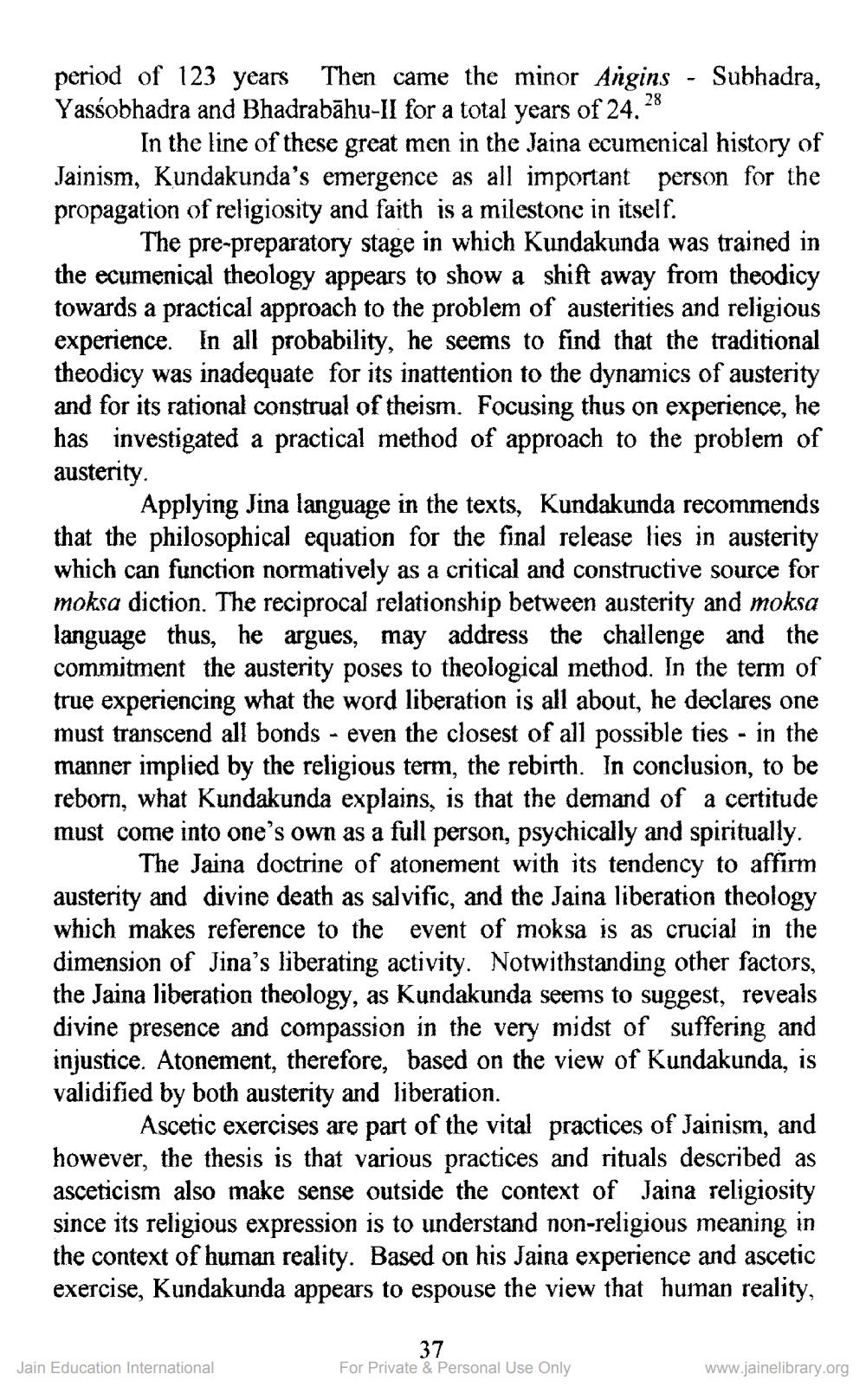________________
period of 123 years Then came the minor Angins Yassobhadra and Bhadrabahu-II for a total years of 24.
28
In the line of these great men in the Jaina ecumenical history of Jainism, Kundakunda's emergence as all important person for the propagation of religiosity and faith is a milestone in itself.
The pre-preparatory stage in which Kundakunda was trained in the ecumenical theology appears to show a shift away from theodicy towards a practical approach to the problem of austerities and religious experience. In all probability, he seems to find that the traditional theodicy was inadequate for its inattention to the dynamics of austerity and for its rational construal of theism. Focusing thus on experience, he has investigated a practical method of approach to the problem of austerity.
Subhadra,
Applying Jina language in the texts, Kundakunda recommends that the philosophical equation for the final release lies in austerity which can function normatively as a critical and constructive source for moksa diction. The reciprocal relationship between austerity and moksa language thus, he argues, may address the challenge and the commitment the austerity poses to theological method. In the term of true experiencing what the word liberation is all about, he declares one must transcend all bonds - even the closest of all possible ties - in the manner implied by the religious term, the rebirth. In conclusion, to be reborn, what Kundakunda explains, is that the demand of a certitude must come into one's own as a full person, psychically and spiritually. The Jaina doctrine of atonement with its tendency to affirm austerity and divine death as salvific, and the Jaina liberation theology which makes reference to the event of moksa is as crucial in the dimension of Jina's liberating activity. Notwithstanding other factors, the Jaina liberation theology, as Kundakunda seems to suggest, reveals divine presence and compassion in the very midst of suffering and injustice. Atonement, therefore, based on the view of Kundakunda, is validified by both austerity and liberation.
Ascetic exercises are part of the vital practices of Jainism, and however, the thesis is that various practices and rituals described as asceticism also make sense outside the context of Jaina religiosity since its religious expression is to understand non-religious meaning in the context of human reality. Based on his Jaina experience and ascetic exercise, Kundakunda appears to espouse the view that human reality,
Jain Education International
37
For Private & Personal Use Only
www.jainelibrary.org




